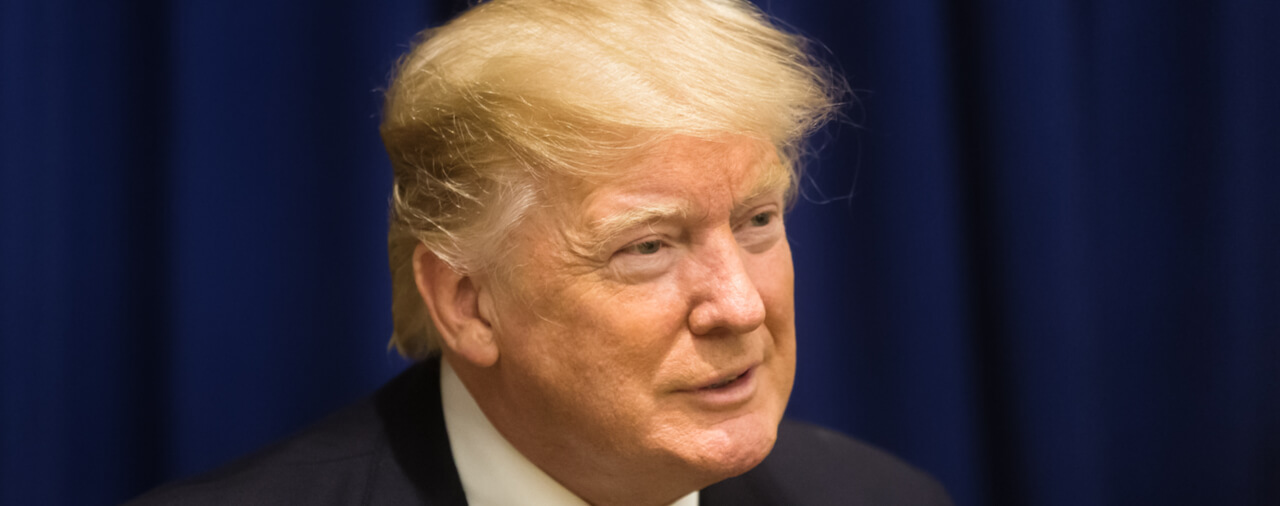Introduction
On February 6, 2018, President Donald Trump issued National Security Presidential Memorandum — 9 (NSPM-9), titled “Organizing the Use of Federal Government Information in Support of the National Vetting Enterprise” [PDF version]. In NSPM-9, President Trump directed the establishment of a National Vetting Governance Board and a National Vetting Center to aid in immigration enforcement and border security. In this post, we will examine NSPM-9 and what its’ implementation may mean going forward.
Section 1: Policy
Section 1(a) states that “[v]etting procedures associated with determining whether individuals pose threats to national security, border security, homeland security, or public safety play a critical role” in protecting the United States and its people from terrorist attacks and other public safety threats. Accordingly, President Trump stated that “[i]t is the policy of the United States, as authorized and appropriate, to collect, store, share, disseminate, and use accurate and timely biographic, biometric, and contextual information in support of immigration enforcement and border security…” These procedures will be used with respect to individuals who:
i. Seek a visa, a visa waiver, or other immigration benefit, or a protected status;
ii. Attempt to enter the United States; or
iii. Are subject to an immigration removal proceeding.
Section 1(b) states as a policy that agencies, when authorized and appropriate, will “process biographic, biometric, and contextual information, including on a recurrent basis, so as to identity activities, associates with known or suspected threat actors, and other relevant indicators to inform adjudications and determinations related to national security, border security, homeland security, or public safety.” President Trump directs agencies to use “all relevant and appropriate Federal Government information, including both intelligence and law enforcement information…” in furtherance of this objective.
Section 1(c) provides that these policies must be conducted in a matter consistent with the United States Constitution and other applicable laws, policies, and procedures, relating to the following:
i. The appropriate handling of information about United States persons (as defined in Executive Order 12333 [PDF version];
ii. The protection of sources, methods, and activities;
iii. Privacy , civil rights, and civil liberties; and
iv. The protection of other sensitive information.
President Trump defines the “National Vetting Enterprise,” which his NSPM-9 sets forth, as “[t]he coordinated efforts of agencies to conduct all of these activities in the manner described above…”
Section 2: Implementation
Section 2 sets forth how the broad policies will be implemented.
The National Vetting Center will be established by the Secretary of Homeland Security, in coordination with the Secretary of State, the Attorney General, and the Director of National Intelligence. It will be established to “support the national vetting enterprise.”
In section 2(a)(i), President Trump sets forth the task of the National Vetting Center. It “shall coordinate agency vetting efforts to identify individuals who present a threat to national security, border security, homeland security, or public safety.” Relevant agencies shall be required to conduct border or other immigration vetting activities either through the National Vetting Center or in coordination with it. These activities must be conducted in a manner consistent with sections 2(b) and (d). Section 2(b) allows for the National Vetting Center to avail itself of “[d]atabases, data sets, knowledge bases, systems, and technical architectures controlled by the Federal Government…” However, this information may only be used to the extent permitted under applicable laws and policy frameworks. Section 2(d) reiterates section 1(c) (discussed in previous section).
Under section 2(a)(ii), the Secretary of Homeland Security will appoint the director of the National Vetting Center from the ranks of senior officials at the Department of Homeland Security (DHS). The deputy directors will be appointed by the Secretary of State and the Attorney General from their respective agencies. Section 2(c) directs the Director of National Intelligence, in coordination with the Secretary of Homeland Security, Secretary of State, and the Attorney General, to “establish a support element to facilitate, guide, and coordinate all [Intelligence Community (IC)] efforts to use classified intelligence and other relevant information within IC holdings in direct support of the Center.”
Section 2(a)(iii)-(vii) contains various provisions providing for how the National Vetting Center will be run, operated, and funded. To read about these provisions in detail, please see Memorandum itself (uploaded in the article Introduction).
Section 2(e) provides for the creation of the National Vetting Governance Board. The National Vetting Governance Board will be established by the Secretary of Homeland Security, in coordination with the Secretary of State, the Attorney General, the Secretary of Defense, the Director of National Intelligence, and the Director of the Central Intelligence Agency. Under section 2(e)(ii), each of these officials will designate one senior executive to sit on the Board. Under section 2(e)(iv), the chair of the Board shall rotate annually among the designees of the Secretary of Homeland Security, the Secretary of State, the Attorney General, and the Director of National Intelligence. The director of the National Vetting Center will serve as an observer at Board meetings.
Under section 2(e)(i), the National Vetting Governance Board will exercise oversight over the National Vetting Center, coordinating the consideration of issues that affect the national vetting enterprise. The Board will also adopt guidance for affected agencies to help them “enable the successful execution of the national vetting enterprise…” Under section 2(e)(iii), the Board may invite other relevant agencies engaged in the national vetting enterprise to participate.
In the event that the Board cannot reach consensus on an issue, the matter shall be referred to the staff of the National Security Council.
Section 2(e)(iv) requires the Board to create a standing Legal Working Group and a separate standing Privacy, Civil Rights, and Civil Liberties Working Group to ensure that the activities of the Board and the National Vetting Center “comply with applicable law and appropriately protect individuals’ privacy, civil rights, and civil liberties…”
Under section 2(g), the agencies that will compose the National Vetting Governance Board will be required to, in coordination with the Director of Office of Management and Budget, jointly submit a plan for implementing the NSPM-9. This plan must address, at a minimum, the following points:
i. the initial scope of the [National Vetting] Center’s vetting activities;
ii. the roles and responsibilities of agencies participating in the Center;
iii. the roles and responsibilities of IC elements participating in the Center’s support element;
iv. the initial categories of information to be used in support of the Center’s activities;
v. a resourcing strategy for both the Center and its support element, which shall include the initial projected costs and staff required to operate the Center;
vi. the relationship between the Center and other relevant United States Government entities and initiatives, including the National Targeting Center and Terrorist Screening Center;
vii. the development or adoption, as appropriate, of relevant processes, procedures, and practices needed to ensure compliance with applicable law and policy and to appropriately protect privacy, civil rights, and civil liberties, as well as sources and methods; and
viii. a projected schedule to reach both initial and full operational capacity.
Under section 2(a)(viii), the National Vetting Center cannot commence operations until the implementation plan is approved by the President.
Under section 2(h), the agencies running the National Vetting Governance Board, in coordination with the Director of the Office of Management and Budget, will be required to report to the President “detailing the efforts made to execute this memorandum and implementation plan” every 180 days. The first report will be required 180 days after the implementation plan is approved by the President.
Conclusion
The creation of the National Vetting Center follows from President Trump’s focus on enhancing vetting capabilities for those seeking immigration benefits in the United States. We discussed other directives to this effect with regard to President Trump’s Executive Order 13780 [see blog] and with regard to his September 24, 2017, Presidential Memorandum [see article]. Although the new memorandum provides broad guidance, it will be up to the agencies tasked with creating the National Vetting Governance Board to come up with an implementation strategy. In general, the purpose of the Memorandum is to create procedures to allow for more intra-agency sharing of information and coordination in the area of vetting foreign nationals. At this time, it is impossible to say what the overall effect of the new strategies for implementing the national vetting enterprise will be. We will update the website with more information on this and related topics as it becomes available.





